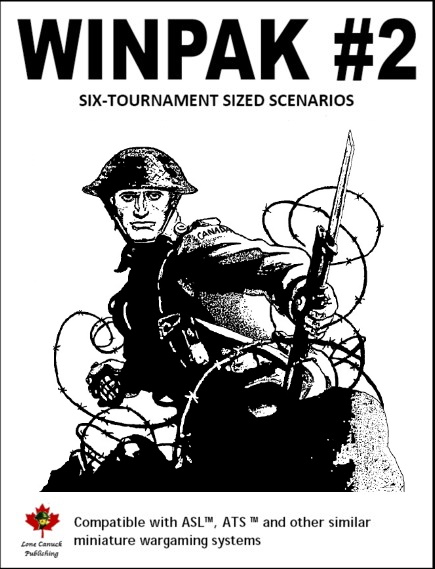

"The YANKS are Coming!" This six scenario pack revolves around the battles involving the American forces in the European Theatre of Operation and is compatible with MMP's ASL System.
WP 11 - "CHIEF", 9 July 1944: A second German counterattack came along the ridge from Martinville and hit the US 175th Infantry Regiment's 1st Battalion on the right. The German's attack, supported by a self-propelled gun, struck Company A, which was already severely decimated, having lost its last officer on the preceding day and was now commanded by a NCO, 1st Sergeant Harold E. Peterson. The results of the self-propelled gun's fire were deadly. Raking the hedgerow from one end to the other, it blew out great gaps and caused casualties with every shot.
WP 12 - ROCK THE KASBAH, 9 November 1942: Fifteen miles north of the Moroccan capital of Rabat, was the seaside resort of Mehdia, which of the major landing sites for the Operation TORCH, was considered to be the least difficult. Tasked with the landing was the US 60th Infantry Regiment, commanded by Brigadier-General Lucian Truscott. The initial landing hadn't gone as smoothly as planned, but it was without serious opposition. Once ashore, Truscott's 9,000 troops were supposed to capture the modern airfield at Port Lyautey, a few miles up the winding Sebou River.
WP 13 - BRIDGE NUMBER 10, 18 September 1944: Just before dawn, Lieutenant Lloyd L. Polette Jr., a platoon commander with Company F, 508th Parachute Infantry Regiment, received orders to capture Bridge Number 10 over the Maas-Waal Canal. For the task, a machinegun section from the 2nd Battalion's MG Platoon joined Polette's 25-man platoon. Arriving at the edge of the woods, south of the bridge, Polette shook out his platoon, and in the rapidly fading darkness gave the order to advance.
WP 14 - TOOTH AND NAIL, 7 July 1944: The American's plan for crossing of the Vire River was for the 2nd Battalion, 117th Infantry Regiment to cross the river at 0430 hours, with Companies E and F abreast. Company G was to first provide fire support on the left and then cross ten-minutes after Company F. The movement began exactly as schedule and it continued in that manner.
WP 15 - BURNT, BLUE AND GRAY, 9 July 1944: The Germans had moved back on the Martinville Ridge, managing to slip behind the frontline units of the American's 29th Infantry Division (Blue and Gray). Apparently the Germans' tactic, whether as a result of his limited strength or of ignorance as to the Americans' location, managed to cut-off the 1st Battalion, 116th Infantry Regiment and prevent its relief, rather than to make a direct attack on the isolated force.
WP 16 - A THORN IN THE FLESH, 7 August 1944: Operation LUTTICH began shortly after midnight without a preliminary artillery bombardment. Dense fog had settled in during the night, as was common in the area, and when morning arrived, it still covered the battlefield, much to the relief of the Germans, as it provided cover from Allied air attack. In the southern sector, the battle-weary 17.SS-Panzergrenadier Division Gotz von Berlichingen, lacking officers and now reduced to kampfgruppe size, was attached to 2.SS-Panzer Division Das Reich and constituted the centre attacking force, tasked with the capture of a ridge known as Point 317.
Map Boards Required: 10, 40, 54, 55, & p